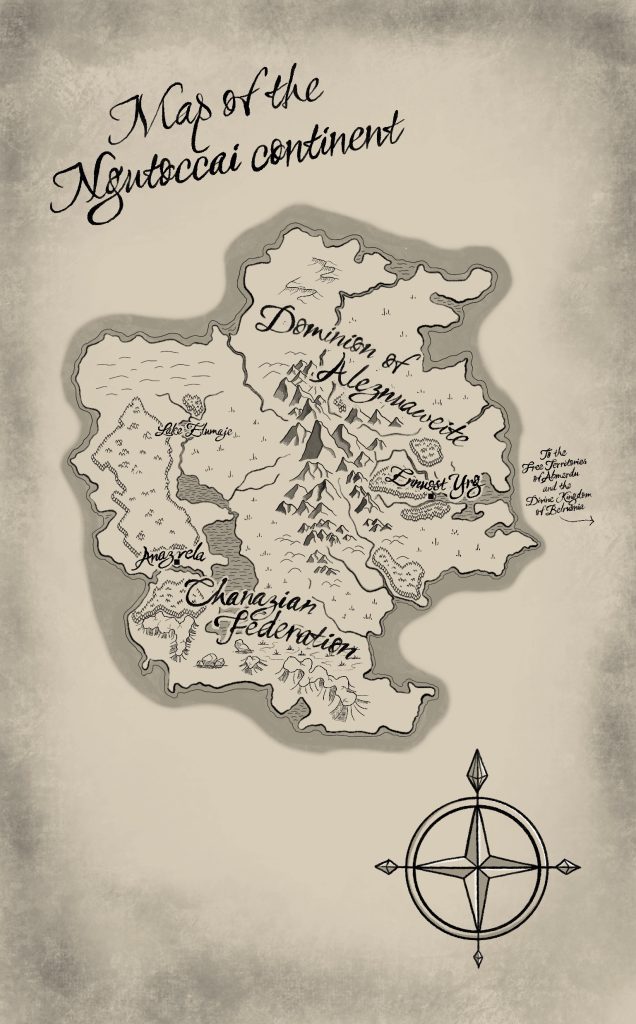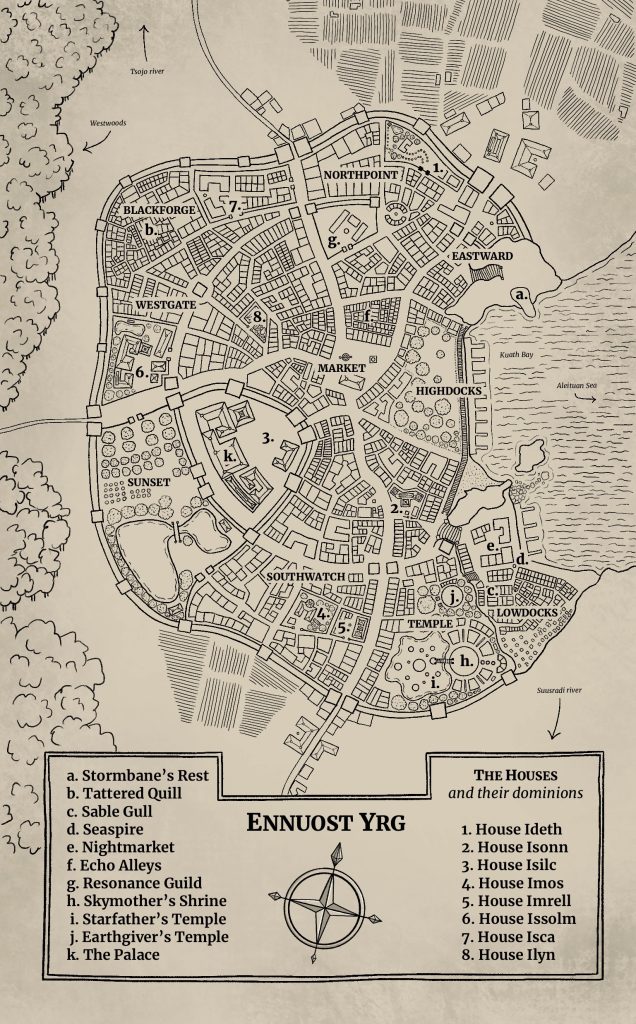Fantasy maps occupy a weird space for me as a reader. I don’t tend to do more than look at them briefly before I start reading, and I rarely go back to study them in detail afterwards, yet if an epic fantasy novel doesn’t have any maps, it somehow detracts from the reading experience for me.
Pretty silly.
It’s as if the presence of a map sends some sort of message about the author’s care factor in worldbuilding.
Totally unfair, since there are plenty of fantasy authors out there who have put in a great deal of effort into their worldbuilding but don’t have maps. Will Wight, famously, has a map for his own reference purposes and steadfastly refuses to put out any maps after his experience with doing one for The Traveler’s Gate trilogy.
I debated long and hard about whether I would put in a map. As a self-published author, I personally finance every dollar that goes into the publication of my books. Commissioning a map from a real cartographer was far out of my budget.
But I felt like I needed one, to make the right kind of tone promises for the series. My alpha readers had given me the feedback that my book didn’t feel like it had enough literary stakes for epic fantasy. Part of that came down to my choice of POV: since it was my debut novel, I didn’t want to fall into the common fantasy author trap of just throwing in random POVs for the sake of it. And in some ways, throwing in another POV felt like a cheat—like I couldn’t be bothered thinking up a better way to tell the story with the existing POVs I had.
As a result, Petition is a tight POV book. There are only two POVs—Rahelu’s and Azosh-ek’s (and his POV didn’t even exist in the first draft). Neither of those characters are in position to know much about the bigger picture politicking happening in the background…but that’s where the “epic” part of the story is.
Also, during the drafting process, my discover writing brain decided to make a map plot-critical. (More about that later.) That pretty much made my decision for me.
Since I couldn’t afford to hire a professional, I had no choice but to draw the maps myself.
Continent map
Of the two maps that I have, the continent map was the easier one to draw.

While Brandon Sanderson is my role model in many respects, I can’t really bring myself to detail my worlds to the level of detail that he does before writing. To be fair, this is important when you’re constructing a world like Roshar, where the natural phenomena cause the ecology and therefore everything else to be wildly different.
That wasn’t the case for me. By and large, my magic system doesn’t really have a big interaction effect with the environment. And since I’m not the best at geography, I used Azgaar’s Fantasy Map generator as a starting point. My process was not very sophisticated: it involved mashing F5 until I got something that I liked the look of.
From there, I traced over the coastline, the rivers, the lakes and made a note of the various biomes on the map. Once that was done, I followed some YouTube tutorials from the WASD and Caeora channels on how to add the rest of the details. My glaciers are not very convincing—they just kind of look like plateaus—but it was the best that I could do.
City map
This was the more difficult map to draw. Unlike the continent map, where it didn’t really matter where I drew the details, I had to get the city map details right, because they were plot-critical:

In theory, you should be able to figure out the plot twist from looking at the map. In theory. I’m not really sure how successful I was at foreshadowing it—you’ll have to let me know.
Here, too, I used a procedurally generated map to get started. This also involved mashing F5 on watabou’s fantasy city map generator until I got something I was happy with. (By the way, the Azgaar world map generator is integrated with watabou’s city map generator by default, which I think is pretty neat. But it doesn’t always come up with a suitable city layout, so I ended up generating a separate map in watabou instead.)
Tracing over this map took longer. I had to deviate from the base map a lot to work in key landmarks that couldn’t be procedurally generated but which existed in the narrative.
Maps and the writing process
Like I said, as a reader, I normally don’t pay too much attention to maps.
But as a writer, I need ’em. Can’t write without them. I get lost trying to figure out where something is in relation to something else. Sometimes, even trying to keep in mind how a room is laid out, where all the objects are located and how every character in the room is positioned relative to everybody else feels overwhelming.
The published maps were the very last thing I created, when I was taking a break between line edits and proofreading. For the most part, the base procedurally generated maps were sufficient for me to keep continuity straight…and of the two maps that I had, it was the city map that I referred to constantly. (And I will post that version, once we get to the chapter with the plot twist!)
Since I can’t afford to hire a full-time continuity editor like Brandon Sanderson, I needed to keep things as straight as possible during the drafting process so having those reference maps handy was vital. Sorting out timeline continuity issues was bad enough without having to add geographical continuity issues into the mix.
Most of the detailed descriptions of the city and various directions didn’t make it past the line edit stage. While I needed understand the exact route Rahelu took through the streets so I could make sure that it made sense, you didn’t need that detail since, as one beta reader pointed out, it slowed down the action.
I wish there was some way to shortcut this part of my process. Sadly, I don’t think there is, since I find it difficult to write something when I can’t visualize it. Turns out I’m the opposite kind of writer to how I am as a reader—when I read, I don’t spend much time visualizing the characters or the world. At least, not consciously.
Brains are weird.
Leave a Reply